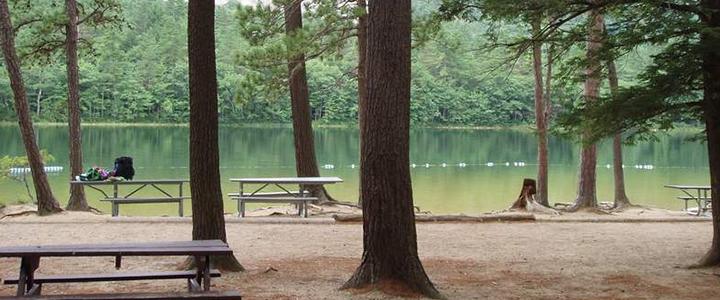
Summer Beach Monitoring Set to Begin
Summer is almost upon us in New Hampshire and that means warm temperatures, trips to the beach and swimming to cool off. The NHDES Beach Inspection Program (BIP) is responsible for monitoring 16 coastal beaches up to twice per week during the swim season to monitor the conditions of the beach and the quality of the water for recreational contact. Funding for the program comes from the federal BEACH Act, an amendment to the Clean Water Act. The goal of the program is to reduce risks to public health by informing beach-goers when fecal-indicator bacteria levels are elevated through regular testing and public notification.
BIP defines the swim season as lasting from Memorial Day to Labor Day when beach visits are at their peak. Nearly 800 coastal beach water samples are collected and tested for fecal bacteria each summer. Overall, coastal beach waters are in excellent condition, with fecal bacteria levels better than state criteria in over 95% of the samples collected since 2003. In 2020, there were 10 coastal beach advisories at seven beaches with 44 total beach advisory days. With 1,424 total beach days across all beaches, this is only 3.1% of days when beach advisories were in place. Annual reports for each of the coastal beaches can be found at the NHDES OneStop Database.
NHDES also dedicates significant time and effort to reduce public health risks at inland public beaches by monitoring freshwater beaches for both fecal-bacteria and cyanobacteria. Over the past several years, BIP has modified its freshwater beach sampling program to focus on the most popular inland beaches and those that have had the most frequent advisories. In this way, staff are most effectively applying their available time to beaches that either see the greatest number of users or are most likely to have high bacteria levels. At the time of publication, the schedule for monitoring freshwater beaches is still in development for 2021 as NHDES works to ensure that swimming beaches are screened for bacteria levels as effectively as possible.
For coastal and freshwater beaches, BIP maintains an interactive map of beaches inspected with current advisories. The map is updated daily with the most current advisory information. Additionally, the NH Beach Inspector Twitter feed is used to provide updates on beach advisories directly to the public. NHDES strongly encourages all beach goers to check one of these media outlets prior to traveling to a beach for the day to make sure there is not an advisory.
For the upcoming beach season in 2021, six coastal beaches will be sampled twice per week, including some of our largest public beaches, such as Hampton Beach, Wallis Sands and Jenness Beach. In addition, two beaches will be sampled once per week and eight will be sampled every other week. Check the beach map during the swim season to see which beaches are sampled.
NHDES encourages the public to be diligent when swimming in natural waterbodies, whether there is an advisory or not. Take notice of the beach and water conditions: are waterfowl or animal excrement apparent; are there are high volumes of people swimming at the peak hours of the day; has there been significant rainfall that may have washed contaminates into the water; does the water look cloudy, discolored or scummy? Try your best to avoid swallowing water and rinse off before and after swimming to help protect yourself and others. Do not feed waterfowl, as this is not heathy for the birds or the people that swim in these waters. Please report any beach-related illness to NHDES.
Learn more about how NHDES is promoting Healthy Swimming:
Public Beaches webpage
Harmful Algal Blooms webpage
Join a beach clean-up! Clean Beaches webpage




